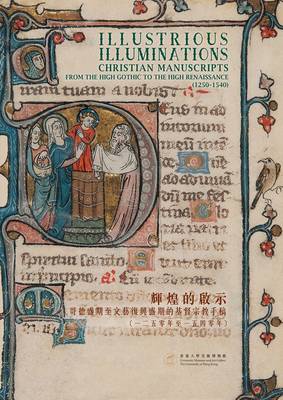
Door een staking bij bpost kan je online bestelling op dit moment iets langer onderweg zijn dan voorzien. Dringend iets nodig? Onze winkels ontvangen jou met open armen!
- Afhalen na 1 uur in een winkel met voorraad
- Gratis thuislevering in België vanaf € 30
- Ruim aanbod met 7 miljoen producten
Door een staking bij bpost kan je online bestelling op dit moment iets langer onderweg zijn dan voorzien. Dringend iets nodig? Onze winkels ontvangen jou met open armen!
- Afhalen na 1 uur in een winkel met voorraad
- Gratis thuislevering in België vanaf € 30
- Ruim aanbod met 7 miljoen producten
Zoeken
Illustrious Illuminations
Christian Manuscripts from the High Gothic to the High Renaissance (1250-1540)
Florian Knothe, Robert McCarthy
Paperback | Engels
€ 27,95
+ 55 punten
Omschrijving
Illustrious Illuminations presents a selection of illuminated Christian manuscripts from the McCarthy Collection. Ranging in date from the High Gothic to the High Renaissance (1250-1540), the miniature paintings give evidence of the talent and culture connected to the art of book illustration. Many of the vibrant hand-copied volumes contain some of the finest illustrations ever produced across Europe, well before Johannes Gutenberg introduced the printing press around 1454. These particular illustrations were chosen from Bibles, books of hours and psalters in order to exemplify a shift in style, from Gothic to Renaissance lines, which likewise was apparent in the architecture and paintings produced under the auspices of the Church. The often harder, more contrasting, lines of the Gothic give way to the Renaissance's altogether natural contours, as well as to softer and increasingly personal facial features.
Specificaties
Betrokkenen
- Auteur(s):
- Uitgeverij:
Inhoud
- Aantal bladzijden:
- 104
- Taal:
- Engels
Eigenschappen
- Productcode (EAN):
- 9789881902344
- Verschijningsdatum:
- 5/07/2016
- Uitvoering:
- Paperback
- Formaat:
- Trade paperback (VS)
- Afmetingen:
- 208 mm x 295 mm
- Gewicht:
- 521 g

Alleen bij Standaard Boekhandel
+ 55 punten op je klantenkaart van Standaard Boekhandel
Beoordelingen
We publiceren alleen reviews die voldoen aan de voorwaarden voor reviews. Bekijk onze voorwaarden voor reviews.











